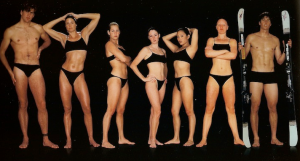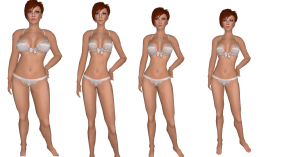 Changing your appearance in real life is quite a hard task. It requires going to the gym, going on a diet, undergoing plastic surgery or using make-up. Appearance has occupied everyone’s mind at some point in their lives and for some people it can even be an obsession.
Changing your appearance in real life is quite a hard task. It requires going to the gym, going on a diet, undergoing plastic surgery or using make-up. Appearance has occupied everyone’s mind at some point in their lives and for some people it can even be an obsession.
In a virtual world though, changing your appearance is as easy as changing your shirt in the physical world. This simplicity is what makes it a very compelling experience to go through. By changing your look, you can experience what it feels like to have a different body shape or face. And in Virtual Reality, you can really feel it at an emotional level. That way, your empathy for other people with different appearances is greatly improved.
For this topic, let’s consider the following aspects of physical appearance:
- Height
- Body fat
- Muscle
- Attractiveness
In the physical world, items 2-4 can be changed, while height can’t really (you can wear high shoes as a trick though).
In Virtual Reality you can change parameters of your Avatar in a few seconds and therefore completely alter your appearance at will and with no effort.
Because of the prevalence of appearance in our society, experiencing physical change in an immersive world is of great relevance. It is pretty easy to put together relevant simulations in an online or offline world that alter appearance. In an online world, people interact with each other through their Avatar that have a defined appearance. In Second Life people generally choose an attractive Avatar, so they don’t really experience empathy for people with a different appearance.
However, specifically designed Avatars can be given to people so that  they can feel how it is to be physically different. It is also possible to map their own body to a 3D model (a virtual clone of themselves) and then alter their appearance, for example making them slimmer or bigger. The first example in particular is useful to improve empathy. In this scenario, they can completely relate to other people with different appearances at an emotional level. The second example is more targeted towards either inducing change (make someone want to exercise to get slimmer for example) or make them appreciate more what they currently have in their lives.
they can feel how it is to be physically different. It is also possible to map their own body to a 3D model (a virtual clone of themselves) and then alter their appearance, for example making them slimmer or bigger. The first example in particular is useful to improve empathy. In this scenario, they can completely relate to other people with different appearances at an emotional level. The second example is more targeted towards either inducing change (make someone want to exercise to get slimmer for example) or make them appreciate more what they currently have in their lives.
Experiments of this kind have already been run and some findings emerged. These findings are not concerned with empathy, however I think it is worth mentioning them since we are exploring the appearance changing topic. The findings were that the height, body shape or attractiveness of the participants’ Avatars affected their confidence, their self-perceived attractiveness, their motivation to exercise or eat healthily.
If you are interested to read more about these experiments, I strongly encourage you to read Infinite Reality by Jim Blascovich and Jeremy Bailenson.
In summary, altering your appearance in Virtual Reality can make a big difference to your empathy. It can also bring other benefits towards self-change in the mix. Different devised scenarios will bring different benefits. Because of the relative simplicity of devising these scenarios, it makes for a compelling endeavor towards achieving extreme empathy!
The next post will cover the final part of Extreme Empathy: exploring extreme scenarios.












Richard A. Beldin
April 20, 2017